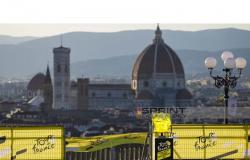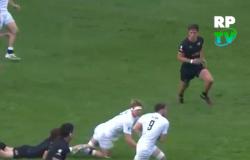There Consultation on Cycling Mobility and Traffic Calmingthe official body of the City Council of the City of Turin, requests information and clarifications on the state of degradation of the priority cycle paths and on the need to restore the horizontal signs.
In 2020, during the Covid-19 pandemic, the Council proposed to make the side streets of the main Turin streets a priority for bicycles, with the aim of facilitating recovery and promoting cycling at a time when public transport was perceived as a place of potential contagion. However, due to lack of resources, the project was carried out exclusively through horizontal and vertical signs, without significant structural interventions to calm traffic. Signage consisted of bicycle pictograms and maximum speed signs.
In the following years, due to the low quality of the materials used and the wear caused by heavy vehicles, the road markings progressively deteriorated. In June 2024, the Council found that the signs had almost completely disappeared, making the cycle paths indistinguishable and compromising the safety of those who use bicycles and scooters. As a result, motorists no longer perceive that they are in cycle-priority and moderate-speed areas, increasing the risk of accidents.
The Consultation also underlines that the kilometers of cycle paths are still included in the “270” communication on sustainable mobility in Turin (https://urbanlabtorino.it/mappe/mobilita-sostenibile-270/), despite the current reality highlighting faded signs and Bicycle pictograms and speed limits virtually disappeared. Therefore, these counter-vials should be excluded from the total count.




According to Consultation on Cycling Mobility and Traffic Calming we are back to 2019 “people in cars drive in a totally car-centric space, without horizontal signs as the only element of traffic calming. All that remains are the vertical signs, with small signs on the sides, ignored on a daily basis.”
The Council therefore jointly asks the two Departments to evaluate:
- STEP 1: Urgent maintenance and restoration of the discolored horizontal signs, bringing the pictograms to 20 at 30 km per hour. A commitment is requested to proceed with the maintenance and management of the cycle network, the positive action of increasing the axles risks being nullified if not maintenance was guaranteed
- By maintenance we mean the need to review the degraded pavement of the old routes (sometimes dangerous), restore and maintain the ground signs where they have disappeared and review some old routes that are no longer up to standard with respect to the current needs of number of cyclists and functionality of the routes
- STEP 2: Maintenance plan for cycle paths with annual budget. Like the maintenance needs of all the land such as roads and pavements, the Consulta urges a decent and safe state also for the surface of shared cycle paths and side streets: a dedicated and constant investment over the years
- STEP 3: Quality of shared spaces with structural interventions, such as chicanes for cars, raised crossings, progressive reduction and alternation of parking spaces to break the rectilinearity, materials other than asphalt. Concrete, structural actions, so that the very design of the road system physically prevents exceeding the maximum speed of 30 km per hour. (E-Bis, Urban Cycle Road)














